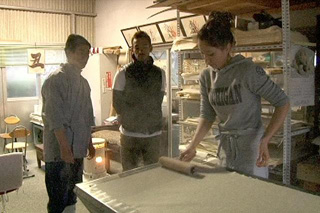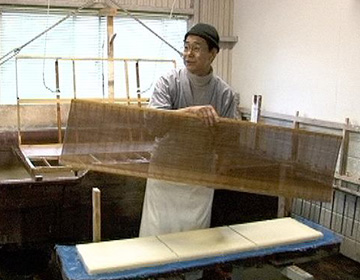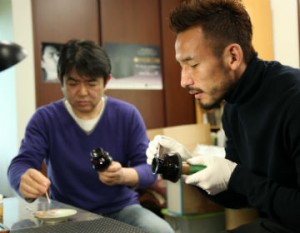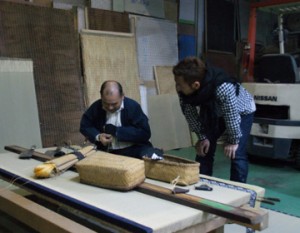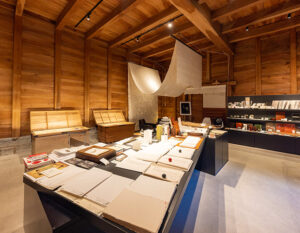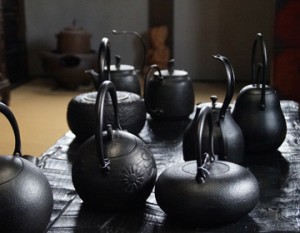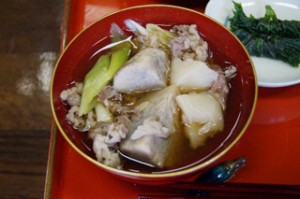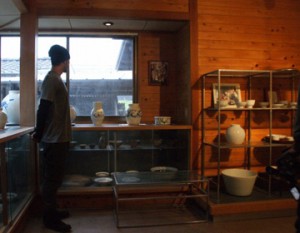Special technique
About 30 km south from Ikazaki, the production area of Ozu ”washi”, traditional Japanese paper. The tradition of ”washi” making is still present, also here in the town of Nomura.
The ”washi” paper of Nomura Town is called ”Senkashi” which was invented in the Edo period. The uniqueness lies in the strength of the paper, made by putting two sheets of paper together just after pulling them up from water, to make them strong.
It’s not just about overlapping two sheets of paper.
The paper made with a fine sieve and the one made with a coarse sieve are combined into one sheet. In this way, the paper of different fiber entanglement are put together, resulting in more than double the strength. The two sheets of paper are laid on top of each other on the ”keta” frame where there is a lot of moisture, so the sheets will stick firmly, and will not peel apart.
It is a very special technique that can only be seen in Senkashi.
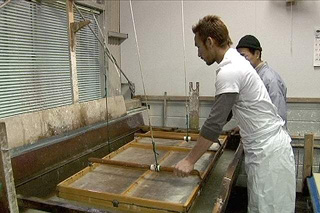
Using the things from Iwate as material
In the past, because of its strength, it was used for drawing, and writing and for books among the aristocrats and warriors of Kyoto and Edo, and also among the common people as oil paper, book covers of ledgers, tags for pawn shops and clothing stores, and also as ”tatoushi” to wrap ”kimono” with. In Nomura-cho, the industry prospered as a side business for farmers during the winter, but after the war there was a decline in demand and many abandoned the business.
We visited Takashi Kikuchi, who now inherits Senkashi, which is in danger of extinction. When Senkashi was designated as a Nationally Selected Cultural Property in 1980, his father, Sadashige, was the only craftsman left who can make Senkashi.
Takashi thought, he cannot let the craft go extinct in his generation, so he resigned his work at the construction company in Osaka, and entered into apprenticeship under his father, the holder of National Intangible Cultural Technique. Thanks to the strict training, Takashi’s Senkashi became widely recognized, and it is now even used for the paper costume of ”Omizutori” ritual at Todaiji Temple.
Now his second daughter and her husband are in training to become his successors. It is a pleasure, also for us to see that such traditional technique being inherited without going extinct.
